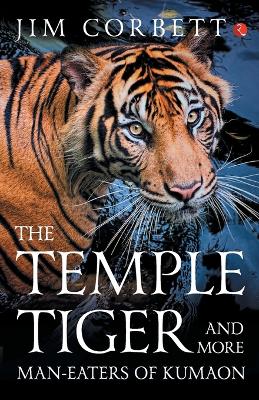Oxford India Paperbacks
4 total works
Jim Corbett was every inch a hero, something like a "sahib" Davy Crockett: expert in the ways of the jungle, fearless in the pursuit of man-eating big cats, and above all a crack shot. Brought up on a hill-station in north-west India, he killed his first leopard before he was nine and went on to achieve a legendary reputation as a hunter.
Corbett was also an author of great renown. His books on the man-eating tigers he once tracked are not only established classics, but have by themselves created almost a separate literary genre. Man Eaters of Kumaon is the best known of Corbett's books, one which offers ten fascinating and spine-tingling tales of pursuing and shooting tigers in the Indian Himalayas during the early years of this century. The stories also offer first-hand information about the exotic flora, fauna, and village life in this obscure and treacherous region of India, making it as interesting a travelogue as it is a compelling look at a bygone era of big-game hunting.
Corbett was also an author of great renown. His books on the man-eating tigers he once tracked are not only established classics, but have by themselves created almost a separate literary genre. Man Eaters of Kumaon is the best known of Corbett's books, one which offers ten fascinating and spine-tingling tales of pursuing and shooting tigers in the Indian Himalayas during the early years of this century. The stories also offer first-hand information about the exotic flora, fauna, and village life in this obscure and treacherous region of India, making it as interesting a travelogue as it is a compelling look at a bygone era of big-game hunting.
The last of Colonel Jim Corbett's books on his unique and enthralling hunting experiences in India, this volume concludes the narrative of his adventures with tigers begun in the famous Man-Eaters of Kumaon. These stories maintain, perhaps even supercede, the high standard of the earlier classic collection. Corbett saves his best story of all for the long concluding chapter in this volume, describing, in The Talla Des Man-Eater, how he embarked on what he feared might be a fatal last test of skill and endurance. As always, he writes with an acute awareness of all jungle sights and sounds, choosing words charged with a great love of humanity, birds, and animals. His calm and straightforward modesty heightens the excitement and suspense of these experiences, in which he continuously risks his life to free the Indian tarai of dangerous man-eaters.
Jim Corbett's classic stories of man-eaters have made him a legend in India. This colorfully-written collection contains classic tales about the human beings who lived in the poignant rural world of the Indian foothills. Corbett, here, displays great sympathy and concern for these people through his sharp observations of their village life, traditions, and culture. Engaging the reader with great force, these stories will serve as an indispensable supplement for anyone who has enjoyed Corbett's narrative gifts before.
Most of Jim Corbett's books contain collections of stories that recount adventures tracking and shooting man-eaters in the Indian Himalaya. This volume, however, consists of a single story, often considered the most exciting of all Corbett's jungle tales. He gives a carefully-detailed account of a notorious leopard that terrorized life in the hills of the colonial United Provinces. This story represents Corbett's most sustained and unique effort.


